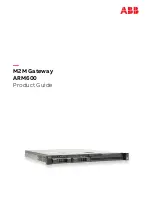
I P - D S U U s e r ’ s M a n u a l
02/02/08
7
TRUNK TYPES
DESCRIPTION
NS-2000/BNS-
2000 VCS
Digital Data
Service (DDS)
Trunks
This option supports all the trunks in the BNS-2000/BNS-2000
VCS product line that use the DDS transport protocol
(SAMML, SAMSL, SAMDBL, TRK-64, TRK-DDS and TRK-
PQ).
BNS-2000/BNS-
2000 VCS
Standard Wire
(SWT)Trunks
This option supports all the trunks in the BNS-2000/BNS-2000
VCS product line that use the SWT transport protocol.
BNS-2000/BNS-
2000 VCS
Trunk-T1 Trunks
This option supports the BNS-2000 TRK-T1 and T1-TRK
modules.
Generic
SDLC/HDLC
Any version of SDLC or HDLC is supported with this port
configuration. Supported speeds range from 9600 bps to T1
(1.544 Mbps). Line encoding of NRZ, NRZI, and inverted
NRZI are supported.
The
IP-DSU
is easy to manage, providing several easy ways to configure and access
status/diagnostic information. A telnet connection to the
IP-DSU
using the standard
telnet server port (port 23), gives access to a command-line-based configuration
application. In addition, a serial RS232-C connection offers the same configuration
capability. Finally, the
IP-DSU
is another network element that the StarKeeper® II NMS
can administer, manage and maintain.
The
IP-DSU
can field upgraded. Upgrades are accomplished through two different I/O
interfaces accessed via its I/O board: Telnet or RS-232C.
The
IP-DSU
houses an SNMP Version 1 agent and supports a large array of MIB
variables.
Trap
,
Set
and
Get
operations are available as well.
The
IP-DSU
supports up to two RADIUS servers for login authentication.
These are a primary, and a secondary, although each is individually enabled. The
support is for either encrypted, or clear authorization. Encryption keys may
contain spaces.








































